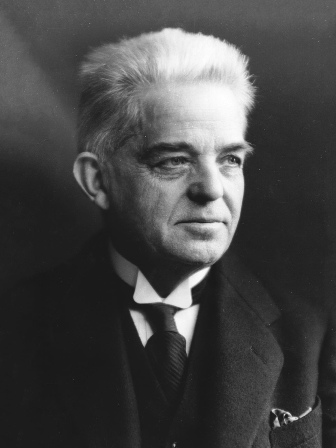Carl Nielsen
(1865-1931)
 Widely recognized as Denmark’s greatest composer, Carl August Nielsen also garnered acclaim for his accomplishments as a conductor and violinist. Growing up in the Danish countryside, many of his eleven siblings (and for a brief period, his parents) immigrated to the Midwest United States. From a young age, Carl had to earn his living. After performing with a military band playing trombone and signal horn, his musical talents were noticed, and he was sent to the Copenhagen Conservatory on scholarship. It was there where he received the first lessons in fundamental technique, and studied composition with Niels Gade, who was head of the conservatory.
Widely recognized as Denmark’s greatest composer, Carl August Nielsen also garnered acclaim for his accomplishments as a conductor and violinist. Growing up in the Danish countryside, many of his eleven siblings (and for a brief period, his parents) immigrated to the Midwest United States. From a young age, Carl had to earn his living. After performing with a military band playing trombone and signal horn, his musical talents were noticed, and he was sent to the Copenhagen Conservatory on scholarship. It was there where he received the first lessons in fundamental technique, and studied composition with Niels Gade, who was head of the conservatory.
Following his time at the conservatory, Nielsen worked as a second violinist in the orchestra for the Danish Royal Opera, a position he would hold for eighteen years. Within his first year with the Opera orchestra, he received a scholarship to study and travel to other countries for several months. During these few months, he met Anne Marie Brodersen, a sculptor. They married in Italy and had three children. Though their marriage was frequently strained, they remained together until Carl’s death.
Carl suffered a severe heart attack in 1926 and never fully recovered. He still continued to compose up until he died of heart failure in 1931.
As a composer, Nielsen found his own aesthetic by first rejecting works of other composers, though he did find an early model in Brahms. He had a period of chamber music, and later wrote incidental music. Most known for his six symphonies, Nielsen places a large emphasis on tonality, creating strong elements of drama and force.
Click below to view Carl Nielsen titles:
t7t3l0uhl8|0010C39D6D07|DetailContent|contenttext|AC393D45-81E4-4017-87CD-126B353D5C3E